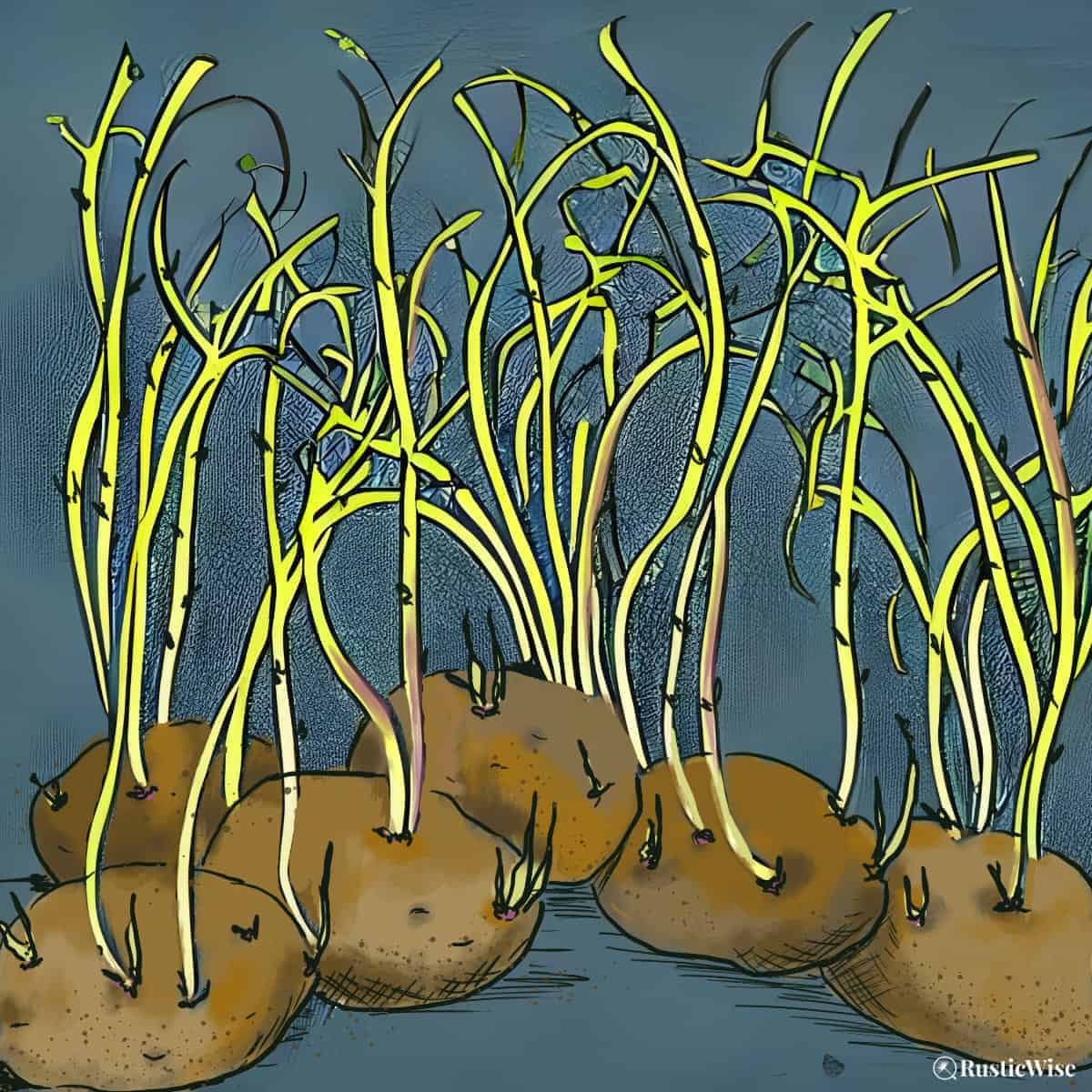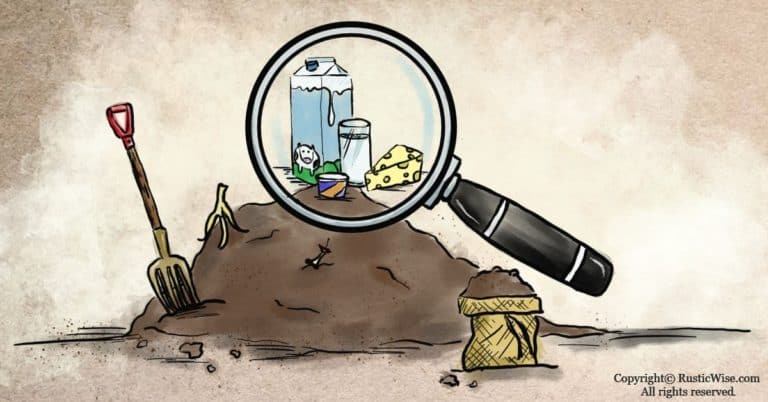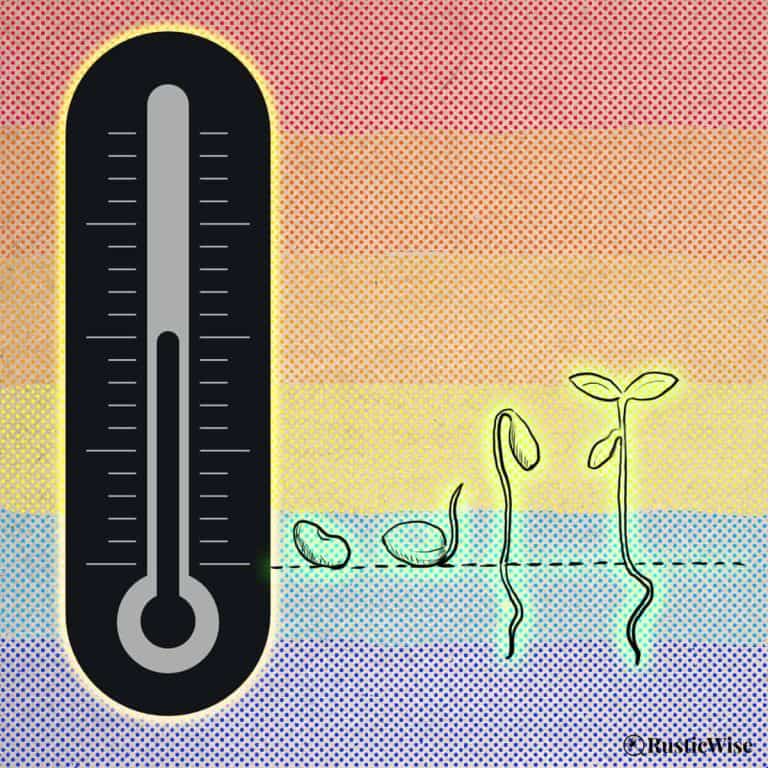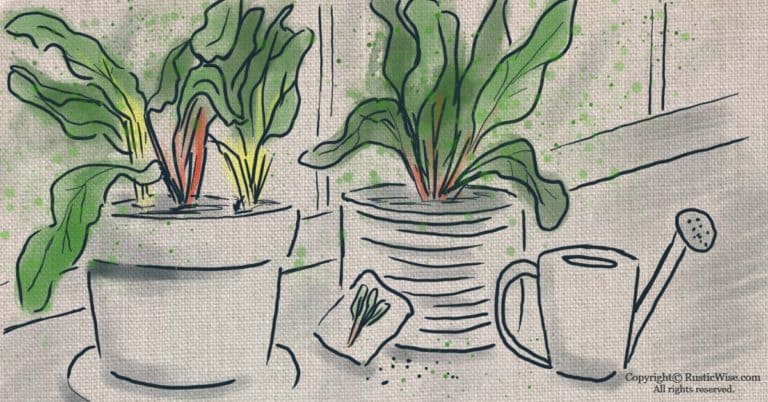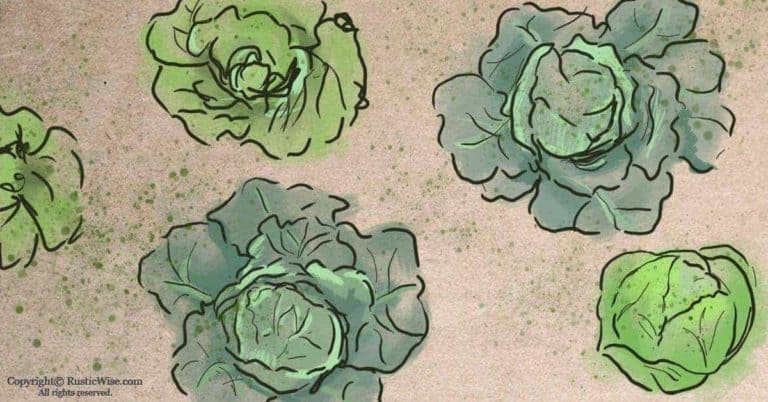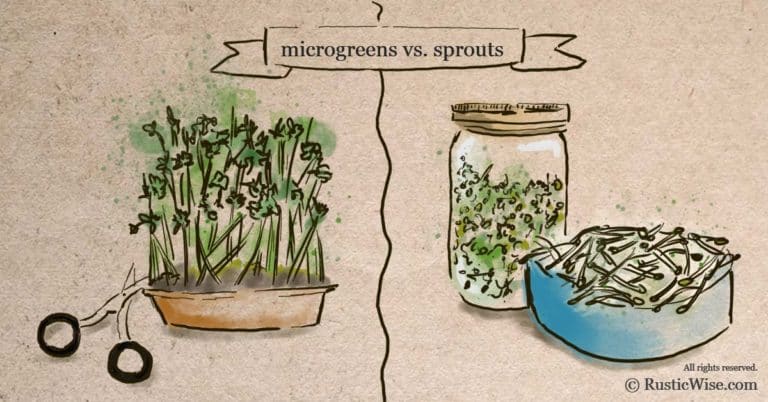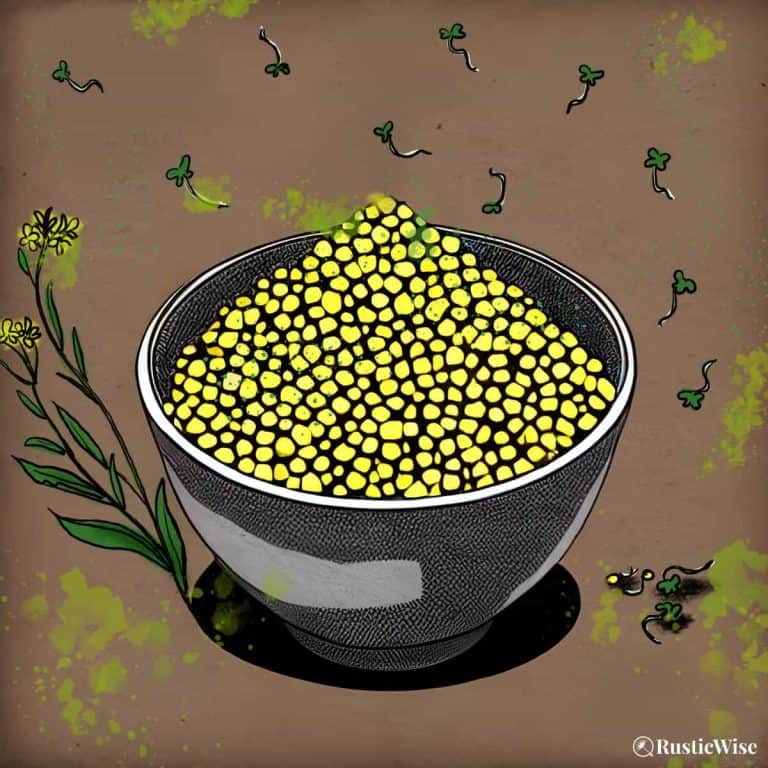How to Plant Potatoes With Long Sprouts (Don’t Toss Those Taters!)
Some things grow without any care or attention. Potatoes are one of those things. If you have a box of potatoes that have sprouted long shoots, don’t toss them yet. Most potatoes are still worthy of planting in your garden, even with long sprouts.
Whether you have been greening or chitting your potatoes to have a head start on the growing season, or have simply noticed your food stores grow sprouts, we’ll show you how to plant potatoes with long sprouts. In a nutshell, you simply leave the lanky sprouts intact and plant them with the shoots pointing upwards.
If you’re tempted to snap off the shoots, keep reading for reasons this might NOT be a good idea. I’ll also share a personal gardening story about what happened when we planted potatoes with tentacle-like sprouts.
What makes potatoes sprout?
Potatoes that sprout in storage are no longer dormant. Sprouted potatoes are also a sign that you’re storing them in an area that’s too warm.
We often forget that this source of food is still a living, breathing tuber. The tuber itself serves as an energy and food reserve. With the right environmental conditions (warmth, darkness and a bit of moisture), potatoes can grow shoots.
So, if the potatoes in your pantry have begun to sprout, don’t fret. Those little green sprouts that you’re seeing are actually points where the potato plant is growing. This is nature’s way of starting new life.
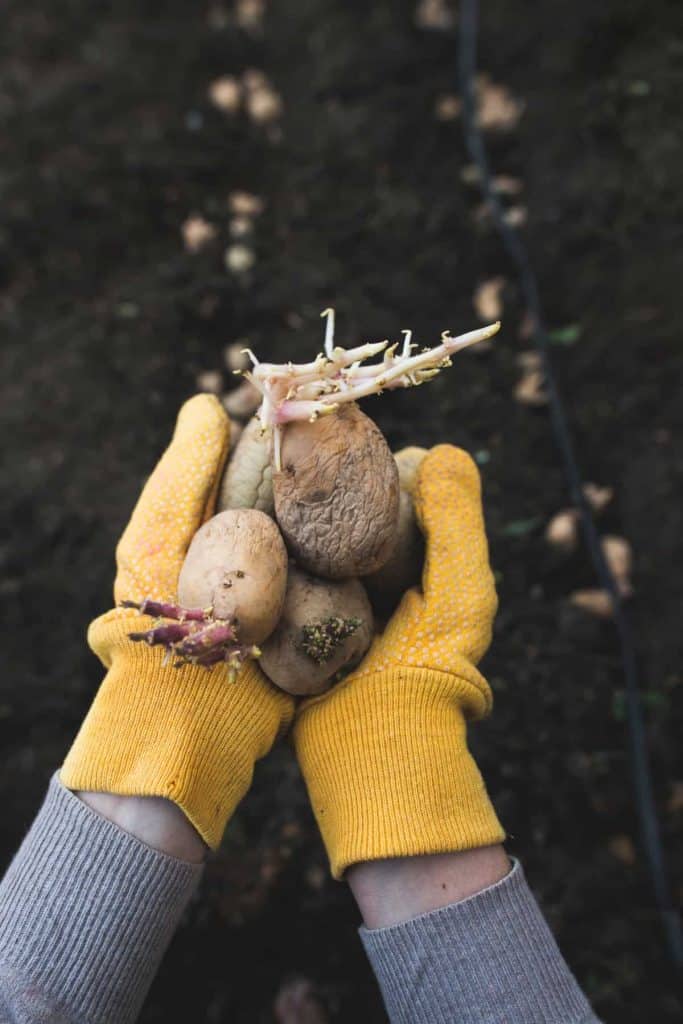
What are seed potatoes, exactly?
A seed potato is a tuber (or a piece of tuber) that is specially grown to produce more potatoes. Potato seed has buds or “eyes” that will eventually produce fresh shoots which will grow into new potato plants. Seed potatoes are planted in the ground and look like regular potatoes.
The term “seed potato” is a bit confusing as they’re not actually seeds per se. You can buy seed potatoes from seed or gardening suppliers. These seed tubers are of higher quality, are free of diseases, and ensure you’re getting varietal pureness.
The takeaway: Planting certified disease-free seed potatoes from a reputable seed supplier is the best way to ensure you get a healthy, high-yielding crop of tubers.
Can you plant seed potatoes with long sprouts?
Yes, it’s safe to plant seed tubers with long sprouts. Ideally, seed pieces should have at least one or two good “eyes” on each piece, and should be roughly the size of a chicken egg.
The practice of intentional sprouting before planting is called greensprouting, greening, or chitting potatoes. Early sprouting gives the tubers a chance to grow greenish sprouts (depending on the type of potato), hence the name. Planting spuds that have pre-sprouted beforehand helps you get a head start to the growing season.
Why you don’t want to remove sprouts on potatoes
If your tubers have long, healthy sprouts, don’t break them off! If you break them off, the potato must redirect its energy into producing a new sprout rather than setting down roots.
Simply plant the potato into the soil, as is.
If you break off a long sprout, the potato may regrow a new one, but it will probably be a smaller, less sturdy potato plant than the original.
We have planted potatoes with long sprouts and they turned out great.
BUT, there are, of course, exceptions to this rule… which leads us to the next section.
When you should break off sprouts on potatoes
Sometimes there are instances when you should break off tuber shoots:
- If your tubers have thin, weak white sprouts. These delicate shoots may break off during the planting process.
- If your tubers have multiple sprouts growing, you can leave the sturdiest ones and break off the smaller, weaker sprouts.
How long is too long for potato sprouts to grow?
What if your potatoes have sprouted tentacles rather than short, stubby sprouts? There are long sprouts, then there are ridiculously elongated sprouts.
I had the honor/horror of discovering a long-forgotten box of spuds in the basement.
One year our potatoes sprouted exceptionally long shoots—well over a foot long, some almost 3 feet long. Some had already unfurled leaves. They looked like mutant spuds with sprawling tentacle arms.
We planted them, anyway.
Carefully, we did our best to plant the potatoes with the shoots meticulously trailed underground. We left the ends with leaves above the soil.
Our crop of potatoes didn’t grow well at all. Maybe the tuber’s energy source was already spent by the time we planted it. Maybe it was just a bad batch of spuds.
Either way, I think there is such a thing as having potato sprouts that are too long.
I would recommend the following general guideline: plant sprouted potatoes if the shoots are sturdy and healthy and growing upright. If the shoots have already flopped over from the weight or length of the shoot, it’s too long and may be better off in the compost pile.
How to plant potatoes with long sprouts
Potatoes like well-draining soil that’s on the acidic side, full sun, and nutrients. Let’s look at the growing conditions, how to cut potatoes for seed, and finally how to plant long-sprouted taters, step-by-step.
Potato growing conditions
- Light: Full sun with at least 6 hours of sun per day.
- Soil: Well-draining soil is a must as potatoes will rot in soggy conditions. Amend soil with compost, leaves, or mature manure to boost soil nutrients. Potatoes thrive in acidic soil with pH 4.8 to 5.5. But this isn’t always workable if you’re sharing the garden with other veggies. So, if you have soil with a pH of 6.0 or higher, make sure you use scab-resistant spud varieties.¹
- When to plant: Plant potatoes when soil temperatures have reached 40 degrees Fahrenheit (4 degrees Celsius).¹ This is usually 2 to 4 weeks before your last frost date, or in early spring.
- Water: Lots of consistent moisture.
Tip: Avoid fertilizer with too much nitrogen, or using too much manure, as this can redirect the tater’s energy into producing lush leaves rather than tubers.
Cutting potatoes for seed
If you have a large potato with many eyes, you can get more bang-for-your-buck by cutting the smaller potato pieces. Here are a few tips:
- Each tuber piece must have at LEAST one good eye (preferably two) and be roughly the size of a chicken egg.
- Remember that the tuber chunk provides a source of energy for the potato plant to grow. So, cutting them into tiny pieces means they won’t have enough nutrients to produce new tubers.
- Make as few cuts as possible.
- To cure or not to cure? Some gardeners prefer to cure the seed pieces to prevent rot and disease. The easiest way to do this is to set the chunks in a warm area with plenty of air circulation for a couple days before planting. Some gardeners can get away without curing seed pieces if they live in an area that’s not prone to potato diseases.
How to plant long-sprouted potatoes step-by-step
In a nutshell: To plant spuds with long shoots, simply dig a hole (or a trench if you have many long-sprouted spuds), and place the entire potato in the ground, shoots facing up.
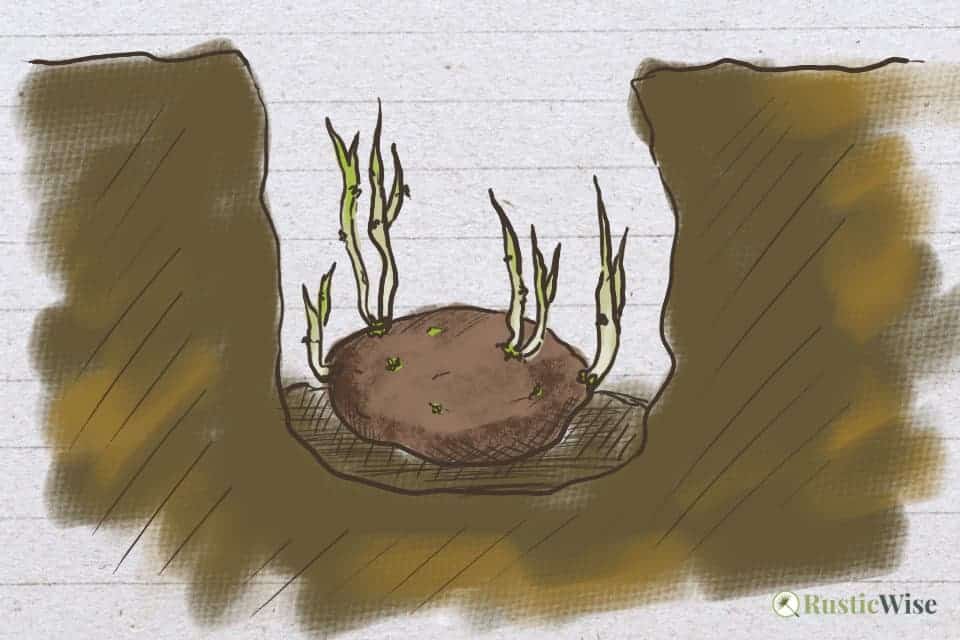
Credit: RusticWise
- Prepare the soil: Ideally, you would prepare the ground the previous autumn or winter by adding compost or mature manure. When spring comes around, it will enrich your soil with nutrients.
- Dig: Dig a hole or a trench about 4 inches deep (10 centimeters).
- Plant: Place potatoes into the hole or trench with the long shoots facing upwards. Space each potato 8–12 inches (20–30 centimeters) apart. If you have more than one trench, space each roughly 2–3 feet apart. For longer sprouts, gently wrap around the potato.
- Cover: Replace the hole with soil. Pat down.
- Water.
How long until you can harvest potatoes?
From planting to harvest, it takes anywhere from 100 to 145 days, depending on if you’re growing “earlies” or maincrops which stay in the ground longer.²
What’s the ideal potato sprout length?
If you’re greensprouting or chitting potatoes, the ideal length of the sprout would be around 1 inch (3 centimeters) long, according to The Royal Horticultural Society.² When your pre-sprouted taters have reached this length, it’s ready to plant!
Tips on storing potatoes to prevent the growth of sprouts
If you have a bunch of potatoes that you’re storing for food and want to prevent sprouts from growing, here’s how to store them:
- Air circulation: For longevity, give your spuds plenty of air flow. You can store them in a cardboard box, a paper or mesh bag.
- Keep it cool and dark: Many potatoes stored in the kitchen or pantry are prone to sprouting because of the warmer temperatures. Store taters in the basement, or another dark cool room, ideally between 40 and 50 degrees Fahrenheit (4–10 degrees Celsius). Storing spuds at temperatures warmer than 50 degrees Fahrenheit encourages sprouting.³
Related questions
Can you plant your own seed potatoes?
Traditionally, many backyard gardeners plant and save their own seed tubers to plant again for next year. (I personally do this!) However, there is a risk to doing this according to the University of Minnesota Extension: planting your own saved spuds may carry diseases into your new crop.
Many diseases may go unnoticed, and some bacteria or fungi could cause trouble in your garden for your spuds, eggplants, peppers, and tomatoes.⁴
Can you plant grocery store potatoes?
I don’t recommend planting store-bought potatoes (even if they have already sprouted). This is because they may have been treated with chemicals which would inhibit their growth. (Most store-bought potatoes if planted would produce poor quality tubers.)
Grocery store taters may also introduce disease to your garden.
👉 If you like this post, see our complete Indoor Growing Collection.
Would you like more timeless tips via email?
Fun tips to help you live an independent, self-sustaining lifestyle. Opt-out at any time.



Author: Josh Tesolin
Josh is co-founder of RusticWise. When he’s not tinkering in the garden, or fixing something around the house, you can find him working on a vast array of random side projects.
References
- Cornell University, Potatoes, http://www.gardening.cornell.edu/homegardening/scenec6be.html. Accessed October 2022.
- The Royal Horticultural Society (RHS), Potatoes, https://www.rhs.org.uk/advice/profile?pid=716. Accessed October 2022.
- Emery, Carla (2012). The Encyclopedia of Country Living, 40th Anniversary Edition. Sasquatch Books. ISBN-13: 978-1-57061-840-6.
- University of Minnesota Extension, Growing potatoes in home gardens, https://extension.umn.edu/vegetables/growing-potatoes#potato-tubers-292911. Accessed October 2022.

